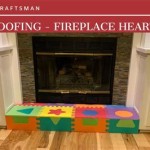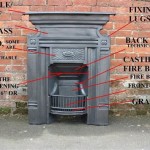The Enduring Appeal of Carved Stone Fireplace Mantels
Carved stone fireplace mantels represent a significant investment in both aesthetics and property value. These architectural elements, crafted from natural stone, are more than mere surrounds for a firebox; they are focal points that command attention and contribute to the overall ambiance of a room. The inherent beauty and durability of stone, coupled with the artistry of carving, ensure that these mantels stand the test of time, both stylistically and structurally.
The selection of a carved stone fireplace mantel involves careful consideration of several factors, including the type of stone, the style of carving, and the overall design of the space where it will be installed. Understanding these nuances is crucial to making an informed decision that aligns with personal preferences and architectural requirements.
Variety in Stone Types for Carved Mantels
The choice of stone is paramount when considering a carved fireplace mantel. Different types of stone possess unique characteristics regarding color, texture, and porosity, impacting the mantel's appearance and long-term maintenance. Some of the most popular stone types for carved mantels include:
Limestone: Limestone is a sedimentary rock known for its creamy, off-white color and relatively soft texture. This makes it an excellent choice for intricate carvings, as it allows artisans to achieve fine detail. Limestone is also relatively porous, which can contribute to a natural, weathered look over time. However, this porosity also means that limestone requires careful sealing to protect it from stains and moisture damage. Different varieties of limestone, such as Indiana Limestone and French Limestone, offer subtle variations in color and grain.
Marble: Marble is a metamorphic rock celebrated for its luxurious appearance and distinctive veining. Available in a wide range of colors, from classic white to dramatic black and green, marble offers a sophisticated aesthetic that complements both traditional and modern interiors. Marble is denser than limestone, making it more resistant to staining and scratching. However, it is also more expensive and can be more challenging to carve due to its hardness. Common marble choices include Carrara marble, Calacatta marble, and Crema Marfil marble.
Sandstone: Sandstone is a sedimentary rock composed of sand-sized grains of minerals, typically quartz. It is characterized by its warm, earthy tones and distinctive granular texture. Sandstone is a durable and relatively porous stone, making it a suitable choice for both indoor and outdoor fireplace mantels. Its rustic appearance lends itself well to traditional and country-style homes. Different types of sandstone, such as brownstone and red sandstone, offer varying degrees of color intensity.
Granite: Granite is an igneous rock known for its exceptional hardness and durability. It is composed of interlocking crystals of minerals such as quartz, feldspar, and mica, giving it a speckled appearance. Granite is highly resistant to scratching, staining, and heat, making it an ideal choice for fireplace mantels that are subjected to frequent use. However, granite is also one of the most challenging stones to carve due to its hardness, limiting the complexity of the designs that can be achieved. Granite is available in a wide range of colors and patterns, offering a versatile option for contemporary and modern interiors.
The selection of the appropriate stone type depends on the desired aesthetic, the budget constraints, and the expected level of maintenance. Consulting with a qualified stone supplier or artisan is essential to ensure that the chosen stone is suitable for the intended purpose and that it meets the specific requirements of the project.
Styles of Carving and Design for Fireplace Mantels
The style of carving and the overall design of the mantel are critical factors in determining its visual impact. Carved stone fireplace mantels encompass a wide range of styles, from classical to contemporary, each reflecting different historical periods and artistic influences.
Classical Styles: Classical fireplace mantels are inspired by the architectural traditions of ancient Greece and Rome. These mantels are characterized by their symmetry, balance, and the use of classical motifs such as columns, pilasters, dentil moldings, and egg-and-dart details. Classical mantels often feature elaborate carvings of acanthus leaves, scrolls, and other ornamental designs. The proportions and dimensions of classical mantels are typically based on mathematical principles, ensuring a harmonious and visually pleasing composition.
Victorian Styles: Victorian fireplace mantels reflect the ornate and elaborate aesthetic of the Victorian era. These mantels are characterized by their intricate carvings, detailed moldings, and the use of decorative elements such as floral motifs, geometric patterns, and figural sculptures. Victorian mantels often feature a combination of different stone types, creating a rich and visually complex design. The scale of Victorian mantels can vary from modest to grand, depending on the size and style of the room.
French Provincial Styles: French Provincial fireplace mantels evoke the rustic charm and elegance of the French countryside. These mantels are characterized by their simple lines, subtle carvings, and the use of natural materials such as limestone and wood. French Provincial mantels often feature a restrained color palette, with soft whites, creams, and grays dominating the design. The carvings on French Provincial mantels are typically less elaborate than those found on classical or Victorian mantels, focusing instead on simple floral motifs and geometric patterns.
Contemporary Styles: Contemporary fireplace mantels embrace minimalist aesthetics and clean lines. These mantels often feature simple geometric shapes, such as rectangles and squares, and the use of smooth, unadorned surfaces. Contemporary mantels may incorporate contrasting materials, such as stone, metal, and glass, to create visual interest. The carvings on contemporary mantels are typically abstract or geometric, reflecting the modern sensibility of the design. Contemporary mantels often prioritize functionality and efficiency, with features such as built-in storage and integrated lighting.
The choice of carving style and design should complement the overall architectural style of the home and reflect the personal preferences of the homeowner. It is important to consider the scale and proportions of the mantel in relation to the size of the room and the fireplace opening. Consulting with an experienced designer or architect can help to ensure that the chosen mantel style is appropriate for the space and that it enhances the overall aesthetic appeal.
Installation and Maintenance of Carved Stone Mantels
Proper installation and ongoing maintenance are essential to preserving the beauty and integrity of a carved stone fireplace mantel. The installation process requires specialized knowledge and skills to ensure that the mantel is securely anchored to the wall and that it meets all applicable building codes. The maintenance requirements vary depending on the type of stone and the environmental conditions.
Installation: The installation of a carved stone fireplace mantel should be performed by a qualified professional with experience in working with stone. The process typically involves the following steps:
1. Preparation: The wall where the mantel will be installed must be properly prepared to ensure that it is structurally sound and capable of supporting the weight of the mantel. This may involve reinforcing the wall with additional framing or installing a support system.
2. Leveling: The base of the mantel must be perfectly level to ensure that the mantel sits flush against the wall. Shims may be used to adjust the level of the mantel as needed.
3. Anchoring: The mantel is typically anchored to the wall using metal brackets or anchors that are embedded in the stone. The anchors must be securely fastened to the wall to prevent the mantel from shifting or falling.
4. Sealing: After the mantel has been installed, it should be sealed with a high-quality stone sealant to protect it from moisture and staining. The sealant should be applied according to the manufacturer's instructions.
5. Finishing: The final step in the installation process involves cleaning the mantel and removing any excess sealant. The area around the mantel should be caulked to prevent drafts and moisture from entering the wall.
Maintenance: The maintenance requirements for a carved stone fireplace mantel vary depending on the type of stone and the environmental conditions. Generally, regular cleaning with a soft cloth and a mild soap solution is sufficient to keep the mantel looking its best. Avoid using harsh chemicals or abrasive cleaners, as these can damage the stone.
Limestone and other porous stones should be sealed periodically to protect them from staining and moisture damage. The frequency of sealing depends on the level of use and the exposure to the elements. Marble should be cleaned with a pH-neutral cleaner to prevent etching. Granite is highly resistant to staining and scratching, but it should still be cleaned regularly to remove dust and debris.
In addition to regular cleaning and sealing, it is important to inspect the mantel periodically for any signs of damage, such as cracks or chips. Minor damage can often be repaired by a qualified stone restoration professional. Early detection and repair of damage can prevent it from worsening and potentially compromising the structural integrity of the mantel.
By following these guidelines for installation and maintenance, homeowners can ensure that their carved stone fireplace mantel remains a beautiful and enduring focal point in their home for years to come. Careful attention to detail and a commitment to proper care will preserve the investment and enhance the value of the property.

New Design Luxury Freestanding Hand Carved Marble Stone Fireplace Mantel Surround Indoor Decoration Supplier China Made In Com

Discover The Finest Cast Stone Fireplace Mantels Near You

Taunton Cast Stone Fireplace Mantels Old World Stoneworks

Birmingham Cast Stone Fireplace Mantels Old World Stoneworks

Hot Hand Carved Indoor Pure White Stone Fireplace Mantel Surround Marble Home Decoration China Made In Com

Carved Bwood Cast Stone Fireplace Mantels Old World Stoneworks

Classic Elegant Modern Hand Carved White Marble Stone Fireplace Mantel Home Decoration Whole China Made In Com

Mantel Shelf Fireplace Wood Carving Art Decor Living Room Hand Carved Chimneypiece Fl Motifs Fireplacedecorcustomorder Mantle

Monumental Antique Neo Renaissance Style Stone Mantel Coming From The Cau Of Montgeon

A Beautiful Cast Stone Surround And Hearth Look Like Hand Carved Limestone Set The Tone Of O Fireplace Home Mantel Surrounds
Related Posts








